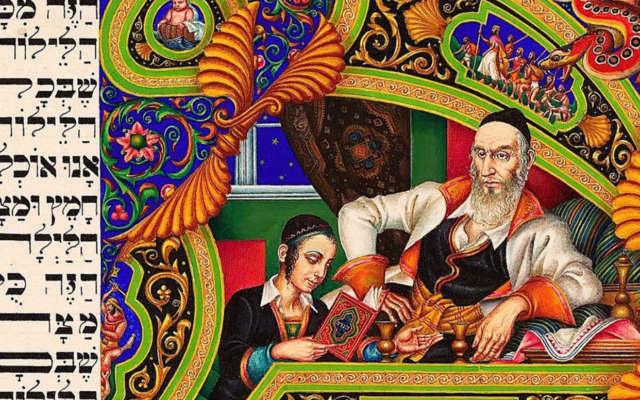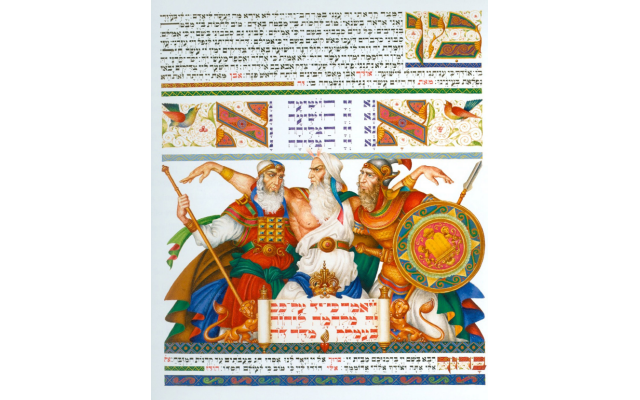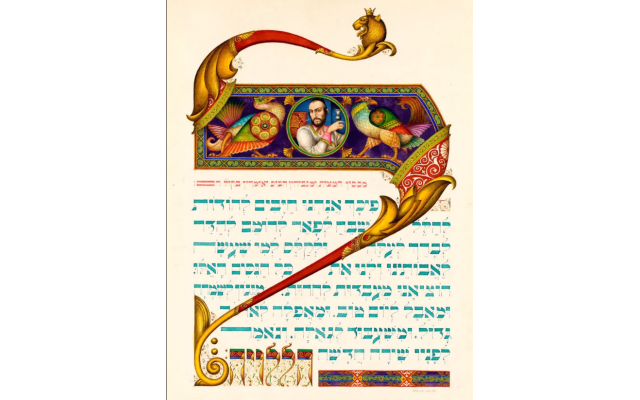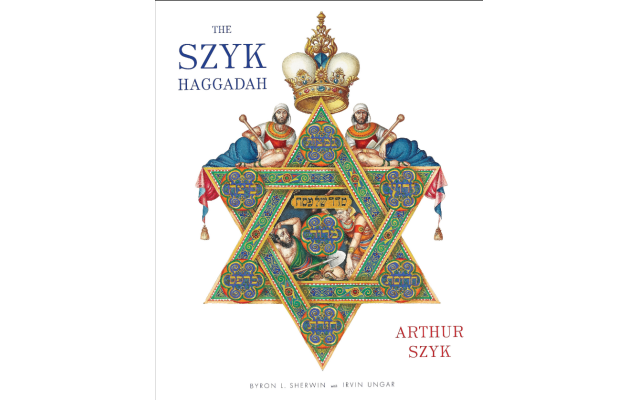Szyk’s Haggadah is a Modern Masterpiece
The artist’s mastery of line and form and design is on view in his Passover work, which took five years to complete.

More than 90 years ago, as Hitler was first coming to power in Germany and discrimination against Jews was starting to spread, Arthur Szyk began work on his Haggadah. Syzk, who by then was already a well-known artist and illustrator with a keen political sense, quickly saw the dangers ahead for European Jewry.
As Stewart Luckert points out in his book, “The Art and Politics of Arthur Szyk,” the artist immediately sensed the rise of a new kind of Pharaoh and a story about freedom that was developing in Europe, where he lived. His vision of the Haggadah that he began to illustrate both in picture and text was one of immediate relevance. He is quoted in Luckert’s book of a comment he made in 1934 to an American reporter.

“An artist, and especially a Jewish artist, can not be neutral in these times. He cannot escape to still lives, abstraction and experiments. Art that is purely cerebral is dead.”
As he worked on the complex figures in his illustrations of the ancient text, he branded each one of the Egyptians he drew with a swastika. Although his publishers, first in Czechoslovakia and then in England, forced him to remove the Nazi symbols from his work, he remained convinced that the parallels of the story of the Exodus more than 3,000 years before were being played out again in the Europe in which he lived. What particularly resonated, for him, was the Haggadah’s traditional reminder of the hardship the ancient Israelites suffered, how they overcame their oppression, and eventually triumphed with a homeland of their own.
He gives special prominence to Jewish heroes like King David and Judith, who, in her Biblical story saves her people by murdering the despotic General Holofernes.
Moses, in particular, is represented as a Jewish freedom fighter who battles Egyptian tyranny and later leads his newly forced nation of Israelites against the Amalekites. According to the account in Exodus, the weary leader’s arms are held high by his nephew, Hur, and by his brother, Aaron, in support of the divinely inspired battle that is taking place.

Syzk also populated his drawings of the Passover story with references to the Zionist dream that was beginning to take root, particularly among those in Eastern Europe who had long been denied their freedom. He portrays the Jewish youth of those persecuted lands waving goodbye to their aging parents as they go off to find a new life in Palestine.
In the English dedication page, a forlorn group of Jews are looking toward the locked and fortified gates inscribed with the word “Zion” as modern naval vessel stand guard. The unmistakable message to the British was a plea to allow the besieged Jews of Europe to take refuge in a Jewish homeland.
The original drawings of the Haggadah were completed in 1939 and went on display in London, just as the British were declaring war again Nazi Germany. A reviewer for the British Jewish Observer publication praised the work for its contemporary relevance.
“It is completely modern in conception … a permanent monument of the reaction of the Jewish spirit against the brutalities that have disgraced the twentieth century in Central Europe.”
In its initial publication in 1940, only 250 copies of the work were made available. There were 125 copies in England and 125 copies in the United States. The famous Jewish historian, Cecil Roth, wrote a translation and commentary to complement Szyk’s Hebrew calligraphy and illustration. The printing was on parchment, the same material used for Torah scrolls. The cost of each copy was $520, which in today’s dollars comes out to over $11,500 for each book, the most expensive publication of its time.

In later editions of about 10,000 copies, published in Israel in 1956 and 1967, the price was about the same as for any fine, illustrated book. In 2008, digital technology was used to bring Szyk’s drawings to their original brilliance and a new English translation and commentary was prepared and published by Abrams in the United States.
Arthur Szyk concludes his Haggadah with a verse from Psalm 14 that expresses the hope that Jews will finally achieve the ultimate freedom of redemption in the Land Israel. It is in keeping with Szyk’s notion that freedom will be achieved by the strength that only a strong spirit and a strong body can achieve.
On the final page are found the Hebrew words, traditionally recited on the completion of the yearly Torah cycle or, in some synagogues as each book of the Torah are completed: “Chazak! Chazak! V’neet-chazeik! — Be strong! Be strong! And let us be strengthened.”



comments